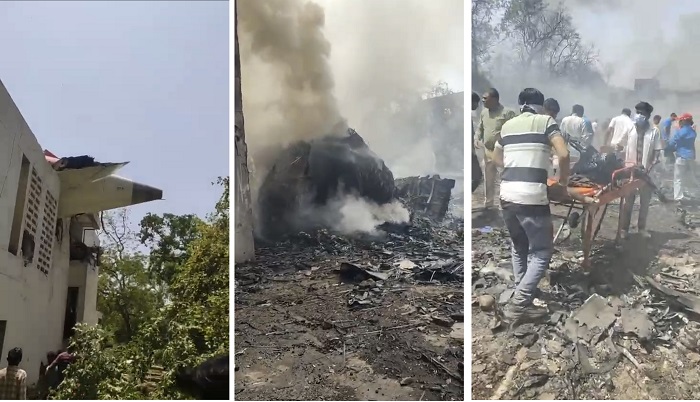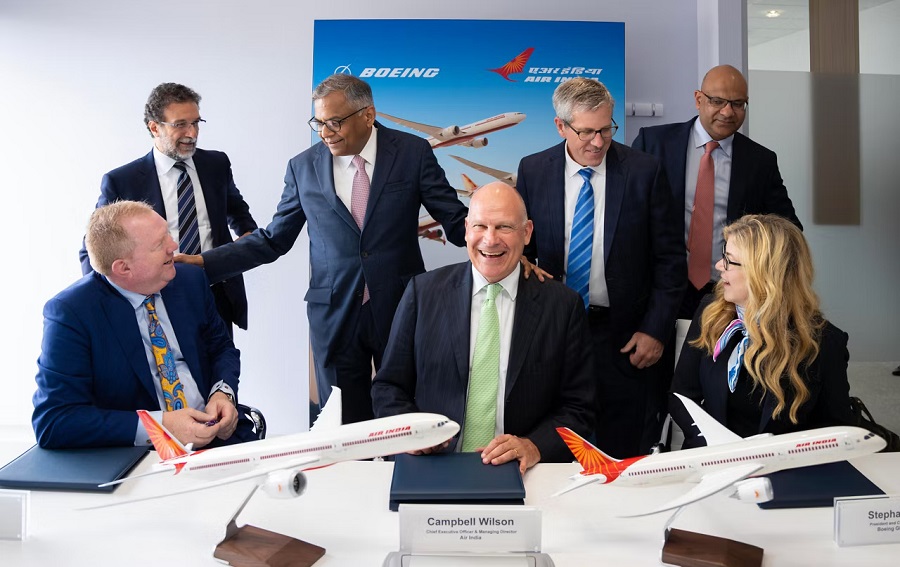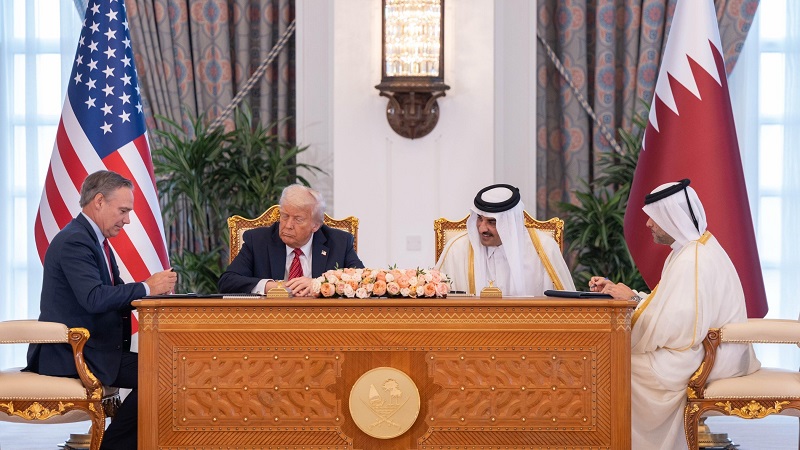By Ravisankar KV
A catastrophic tragedy has struck India’s aviation sector, sending shockwaves across the global air travel community. The crash of Air India Flight 171, a Boeing 787-8 Dreamliner, shortly after takeoff from Ahmedabad on Thursday, June 12, 2025, has claimed the lives of 241 passengers on board with a miraculous escape of a lone Passenger and over 50 on the ground. This devastating incident marks the first fatal crash involving a Boeing 787 Dreamliner and ranks among the deadliest air disasters of the past decade.
The flight, bound for London Gatwick, issued a Mayday call moments after departure but lost contact with air traffic control before plummeting into a densely populated residential area in Ahmedabad, the capital city of India’s Western coastal state of Gujarat. A high-stakes international investigation is now underway to uncover the cause, amid renewed scrutiny of aircraft safety protocols and manufacturer accountability.


A Tragic Blow to a Previously Trusted Aircraft Model
Until this crash, the Boeing 787 Dreamliner held a strong safety record. Launched just 14 years ago, it had recently celebrated its one-billionth passenger milestone. Known for its fuel efficiency, extended range, and passenger comfort, the Dreamliner was considered one of Boeing’s most successful aircraft platforms—a mainstay of international long-haul routes.
The Ahmedabad accident has shattered that perception. Although the exact cause of the crash is yet to be determined, preliminary flight data suggests a sharp loss of altitude immediately after takeoff. The aircraft reportedly issued a “MAYDAY” call before losing all communication. Witnesses and early Air Traffic Control (ATC) reports described a plume of thick black smoke rising from a crash site just outside the airport perimeter.


Multinational Investigation Underway
India’s Aircraft Accident Investigation Bureau (AAIB), in coordination with the U.S. National Transportation Safety Board (NTSB) and British air safety experts, has launched a full-scale probe. Boeing has dispatched a technical team to support the inquiry, and CEO Kelly Ortberg offered Air India his “full support” during a call with Chairman N. Chandrasekaran.
While early speculation points to a possible engine failure—GE Aerospace’s GEnx-1B engine is currently under focus—no definitive conclusions have been made. Aviation analysts have noted the flight’s abnormal climb pattern as a potential sign of power loss.


Boeing’s Turbulent Decade Gets Rougher
This incident deepens the crisis at Boeing, a company already under intense scrutiny. Since the 737 MAX crashes in 2018 and 2019, which claimed 346 lives, Boeing has been battling one setback after another, including safety lapses, a damaging whistleblower scandal, mid-air incidents, and delayed aircraft deliveries.
Just last year, a door panel detached from a Boeing 737 MAX mid-flight, prompting a temporary global grounding of that variant. Subsequent investigations revealed missing bolts on the fuselage, raising serious questions about Boeing’s quality control procedures.
Whistleblowers such as John Barnett and Sam Salehpour have accused Boeing of compromising safety to meet deadlines. Salehpour specifically flagged manufacturing concerns with both the 777 and 787 Dreamliner lines—the same model that crashed in Ahmedabad.
Ortberg, who was brought out of retirement to stabilize the company, has promised a renewed focus on safety and internal reforms. However, Thursday’s Ahmedabad disaster threatens to unravel any regained investor or regulatory confidence.
Financial Fallout: Markets React Sharply
Boeing’s share price dropped nearly 5% in the aftermath of the crash, closing at $203.75 on Nasdaq. GE Aerospace also experienced a loss of over 2% amid concerns about engine performance. Aviation-linked stocks in India tumbled, with IndiGo and SpiceJet seeing dips of over 4% and 3% respectively, while Adani Enterprises, which operates the Ahmedabad airport, also declined by nearly 2%.
“Investor confidence has taken a hit,” commented Douglas Harned of Bernstein. “If an engine fault is confirmed, GE could face regulatory pressure. But even if not, Boeing’s reputation will inevitably take another blow.”
India’s Boeing Pipeline at Risk?


The timing of this incident could not be worse for Boeing. Indian airlines—including Air India and Akasa Air—have massive Boeing orders. In 2023, Air India placed a landmark fleet renewal order for 220 Boeing aircraft, with additional options for 70 more, including Boeing 737 MAXs, 787 Dreamliners, and 777X jets. Akasa Air has 226 Boeing 737 MAX jets on order. Further deals are under negotiation, with up to 200 additional aircraft in play.
Any confirmation of mechanical or production flaws in the Ahmedabad crash could significantly delay or jeopardize these substantial orders. Analysts suggest that Indian carriers may now reconsider their Boeing-heavy strategies in favor of Airbus, especially after facing repeated delays in aircraft deliveries.
“Air India’s strategic revival plan, including long-haul connectivity to Europe and the US, hinges on timely Dreamliner deliveries,” an aviation analyst stated. “This crash will complicate that roadmap.”
Broader Implications for Global Aviation Expansion


This tragedy also strikes at a critical moment for Boeing and GE Aerospace, just as the aerospace giant is riding a wave of high-profile international orders. Most recently, Boeing secured a landmark agreement with Qatar Airways during U.S. President Donald Trump’s visit, marking one of the largest commercial aircraft deals in aviation history. The Qatar Airways deal includes a firm order for 130 Boeing 787 Dreamliners—the largest Dreamliner order ever recorded—and 30 Boeing 777-9 aircraft, with additional options for 50 more widebody jets. Simultaneously, Qatar Airways also inked a record-breaking engine agreement with GE Aerospace for over 400 engines, including 60 GE9X and 260 GEnx units, cementing the airline’s position as a global aviation powerhouse.
India’s aviation sector, now the world’s third-largest after the United States and China, is experiencing explosive growth. Driven by a burgeoning middle class, government-backed connectivity programs, and ambitious international expansion plans by Indian carriers, the market is a hotspot for global aviation investments. At the same time, similar momentum is seen in the Middle East, where Qatar Airways recently placed the largest-ever Dreamliner order with Boeing. While these developments signal unprecedented growth for Boeing and GE, the Air India tragedy has reignited pressing questions about aircraft safety, quality control, and the urgent need for global regulatory oversight.
Paris Air Show Fallout and Legal Risks
Boeing CEO Kelly Ortberg has canceled his scheduled appearance at next week’s Paris Air Show—traditionally a showcase for aerospace innovation and major aircraft deals. His withdrawal signals how seriously the company views the current crisis.
With Airbus poised to capitalize on Boeing’s reputational damage, particularly in growth markets like India, Southeast Asia, and the Middle East, analysts believe Boeing’s long-term market share could erode further.
Meanwhile, significant legal risks loom large. Having just narrowly escaped criminal prosecution in the U.S. over the 737 MAX scandal—agreeing to over $1.1 billion in fines—Boeing now faces fresh liabilities, reputational damage, and possible penalties if the Ahmedabad probe reveals design or manufacturing flaws.
A Moment of Reckoning for Boeing
The Air India Flight 171 tragedy may ultimately become a watershed moment for Boeing—not just due to the immense human loss, but because it symbolizes a potential collapse of confidence in a manufacturer that was once the gold standard of aviation safety.
With Indian regulators, global aviation agencies, and airline clients watching closely, Boeing faces a crucial test. Its ability to support investigations transparently, implement tangible reforms, and regain public trust will determine whether it can emerge from this latest crisis or face deeper turbulence ahead.
